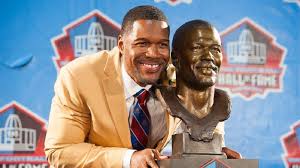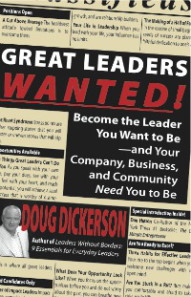I hated every minute of training, but I said, ‘Don’t quit. Suffer now and live the rest of your life as a champion.’ – Muhammad Ali
In Readers Digest, Lori Andersen shared a story about an experience as a professional animal trainer. Andersen recounts, “I was disturbed when my own dog developed a bad habit. Every time I hung my wash out on the clothesline, she would yank it down. Drastic action was called for. I put a white kitchen towel on the line and waited. Each time she pulled it off, I scolded her. After two weeks the towel was untouched. Then I hung out a large wash and left to do some errands. When I came home, my clean clothes were scattered all over the yard. On the line was the white kitchen towel.”
That humorous story illustrates the importance of proper training. While we can all acknowledge the necessity of leadership training and the value it brings, properly identifying the right type of training is important.
Much time and resources is devoted to and invested in the topic of leadership development so you want to make sure you get it right. From Fortune 500 companies to the small mom and pop business, everyone wants and needs a competitive edge and leadership training is a practical way to foster that improvement. But what specifically should you be training for? Here are a few tips for your consideration before you plan your next leadership training activity.
Train to replenish
Workplace anxiety and stress can take a toll. In fact, according to the American Psychological Association (http://bit.ly/1jRDByb) in 2012, 65% of Americans cited work as a top source of stress while only 37% said their organizations provide sufficient resources to help them manage that stress.
Before you get too far down the road in planning some extravagant training session keep in mind the likelihood that your team members are stressed out and perhaps you should focus on their well-being first. Healthy team members (mentally, physically, emotionally) will perform at a higher quality and standard if they are not stressed out or burned out. Don’t add to the problem with the good training at the wrong time.
Train to remind
Sometimes the best thing you can do in a leadership training session is to simply remind your people of the basics. There’s no need to reinvent the wheel. For example, soft skills are some of the most important skill sets your people will learn and apply. It’s in the daily practice of these skills that you get ahead.
Don’t know where to begin? Try these: good manners, communication, collaboration, attitude, feedback, and trust for starters. Blunders in leadership happen not because you fail at learning new skills but because of laziness in the old ones. Reminders of the basics are never a waste of time.
Train to reinvigorate
When team members are reinvigorated it can pay huge dividends for your organization. When your people have a fresh perspective of their value to the organization, a fresh take on your vision going forward and what their future will look like, you have most likely met some target goals of a training event.
Key here is take stock of your team members’ well-being, sharpen their existing skills, and take everyone to the next level in their leadership. The goal here is to have everyone moving in the right direction – onward and upward.
I am a strong advocate of leadership training and personal development but what’s more important is hitting the right targets. Be perceptive of where your people are collectively so you can fashion the best training possible to meet your goals. Having their best interest at heart is a step in the right direction, but moving your people toward that goal takes careful planning. Be sure to align your purposes with your training.
© 2014 Doug Dickerson









